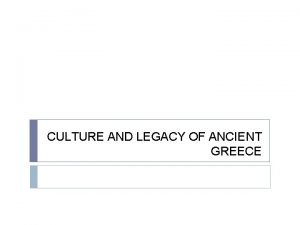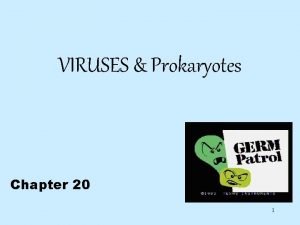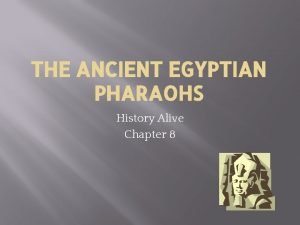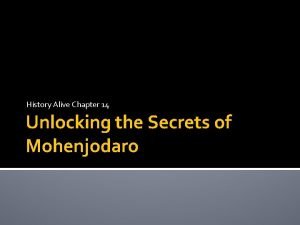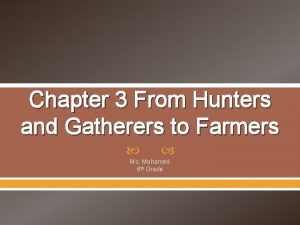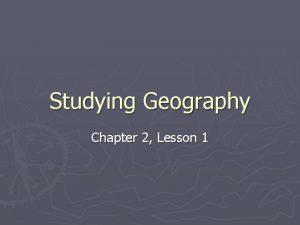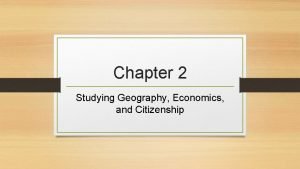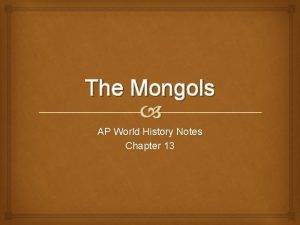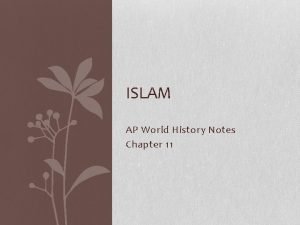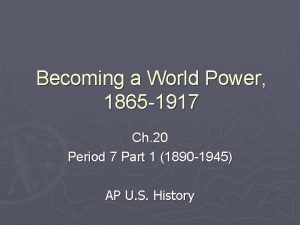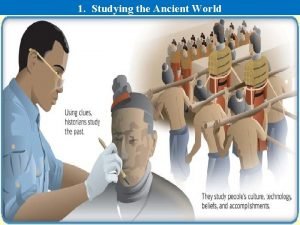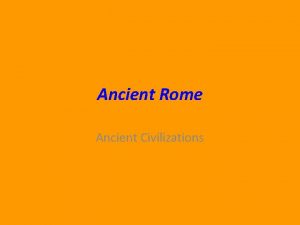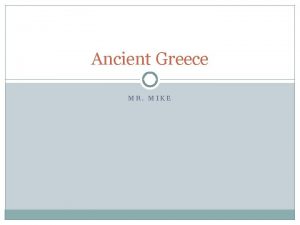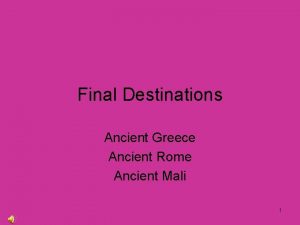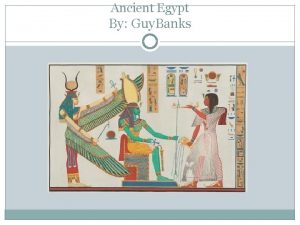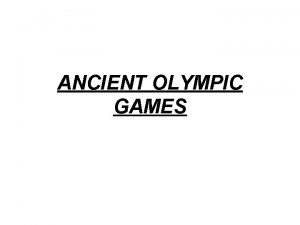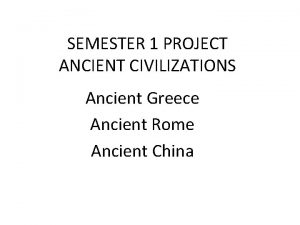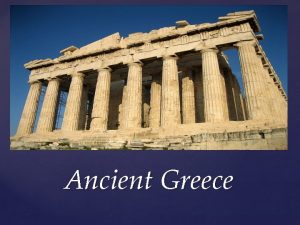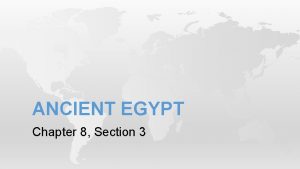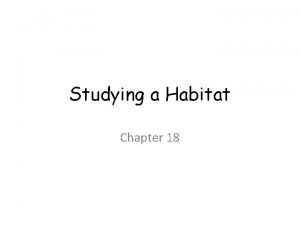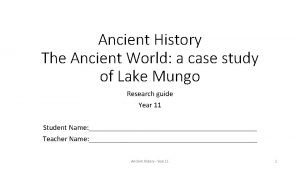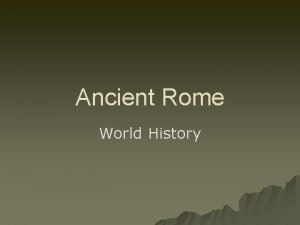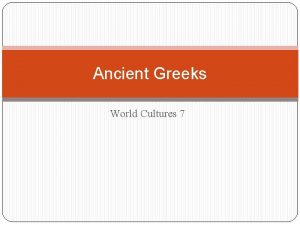Chapter 1 Studying the Ancient World Section Notes





















- Slides: 21

Chapter 1 – Studying the Ancient World Section Notes Video Clues from the Past Putting the Pieces Together Archaeology, History, and Geography Quick Facts Chapter 1 Visual Summary Maps Ancient Troy Images Evidence of the Past Ancient Clues An Artifact as Evidence The Legend of Troy

Clues from the Past The Big Idea Historians and archaeologists study fossils, artifacts, and written records to learn about the past. Main Ideas • Historians and archaeologists look for clues in written records and artifacts. • Other sources of clues include legends and luck.

Historians Study History • History is the study of the past. • Historians learn about the past. Curious about the Past • How, when, where, and why people did what they did • Causes and effects Mainly Use Written Works • • • Laws Speeches Letters Contracts Poems Carvings

Archaeologists Study History Study Fossils Study Artifacts • Use materials that people left behind • Parts or imprints of something that was once alive • Objects created and used by humans • Explore places where people lived, worked, and fought • Examples: ancient bones, imprints preserved in rocks • Examples: arrowheads, coins, toys, pottery, and jewelry

Historical Sources Primary source Examples Secondary source Examples Account of an event created by someone who took part in or witnessed the event Treaties, court records, diaries, letters, videos, or photographs of and actual event Information gathered by someone who did not take part in or witness an event Textbooks, encyclopedias, biographies, or videos describing events after they occur

Other Sources of Clues Legends • Stories and legends can point scholars toward discoveries. • Real people may have inspired legends. • Can provide clues to locations Luck • Modern digging crews can uncover ancient sites. • Unknown documents can be found when least expected.

Putting the Pieces Together The Big Idea Historians and archaeologists put written and unwritten clues together to learn about the past and sometimes to revise their ideas about the past. Main Ideas • Using the evidence they have gathered allows historians to draw conclusions about societies in the past. • Views of the past change because of new discoveries and new interpretations.

Main Idea 1: Using the evidence they have gathered allows historians to draw conclusions about societies in the past. • A society is a community of people who share a common culture. • Clues can teach historians about social structure—the way a community is organized. • Families are a very important part of a culture’s social structure. – People can learn a lot about a culture’s family life from its literature and art.

Politics and Economic Systems Written sources such as political speeches can inform historians about political and economic systems. Some sources, such as records, are useful for looking at people’s financial situations. Artifacts such as coins and obsidian offer clues as well.

Language • Learning about ancient languages can be very difficult for historians. • Clues like the Rosetta Stone showed the same message in Greek and Egyptian, making it easier to translate.

Art and Architecture Art can show a group’s religious beliefs, such as the artwork in the Egyptian tombs. Art also gives clues about a culture’s level of technology. Architecture provides clear evidence about society. The buildings themselves can also hold clues.

Beliefs and Values The Code of Hammurabi and Confucius’s teachings tell us about the importance of family and the value of justice. Unwritten sources can also provide good information. Greek statues and vases show the importance the Greeks placed on sports.

Main Idea 2: Views of the past change because of new discoveries and new interpretations. • Historical evidence can change our understanding of when events happened. • How we view a society can also change with new archaeological finds. • New evidence can shed light on old stories.

New Interpretations • The growth of democracy, the civil rights movement, and women’s movements have affected how we study history. • Once rich and powerful people received most of the attention in history books, but that is changing now. • Personal opinions of historians can also affect their views.







Click window above to start playing.
 What can we learn from studying ancient greek artwork
What can we learn from studying ancient greek artwork Section 1 studying viruses and prokaryotes
Section 1 studying viruses and prokaryotes History alive chapter 8
History alive chapter 8 History alive chapter 14
History alive chapter 14 History alive ancient world chapter 3
History alive ancient world chapter 3 Chapter 24 studying the sun
Chapter 24 studying the sun Guided reading lesson 1 studying geography answer key
Guided reading lesson 1 studying geography answer key Chapter 2 lesson 1 studying geography
Chapter 2 lesson 1 studying geography Pictures of ancient and modern means of communication
Pictures of ancient and modern means of communication Ancient india vs ancient china
Ancient india vs ancient china Chapter 13 ap world history
Chapter 13 ap world history Chapter 11 ap world history notes
Chapter 11 ap world history notes History of commerce notes
History of commerce notes Becoming a world power 1865-1917
Becoming a world power 1865-1917 Chapter 10 ap world history notes
Chapter 10 ap world history notes Chapter 15 ap world history
Chapter 15 ap world history Conversion notes brutes en notes standard wisc 5
Conversion notes brutes en notes standard wisc 5 Ap world history chapter 25 africa and the atlantic world
Ap world history chapter 25 africa and the atlantic world Chapter 17 section 3 world history
Chapter 17 section 3 world history Chapter 30 section 2 world history
Chapter 30 section 2 world history Chapter 15 section 2 world history
Chapter 15 section 2 world history Reforming the industrial world chapter 9 section 4
Reforming the industrial world chapter 9 section 4
